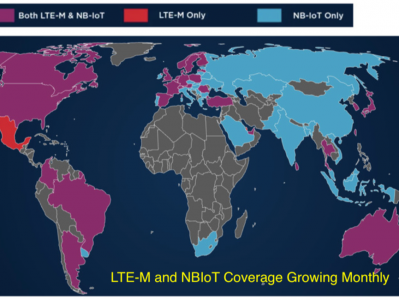IoT (Internet of Things) Explained
All IoT Avian and Ear Tags and Collars.
All IoT tags and collars are fitted with Telenor’s global IoT (Internet -of-Things) SIM come with LTE-M and NBIoT connectivity.
LTE-M and NBIoT sits across the 4G and 5G spectrum but with significantly improved coverage and power saving attributes.
NOTE: From the end of 2023 2G and 3G will be turned off. Devices fitted with 2G and 3G technology will stop working. For this reason, GPS Collars stopped providing 2G or 3G devices.
LTE-M is a simplified version of regular LTE which reduces hardware complexity and cost. LTE-M is designed for “Machine-to-Machine” (M2M) devices that collect data at one point and transfer it to another machine (web server) at another point. LTE is specifically for roaming, just like 4G and 5G networks (Note that from 2023, 2G and 3G services across the world are shutting down), but supports features that significantly reduce the power consumption of devices. This can result in a battery life of more than ten years for permanent battery products and is ideal for low power solar powered ear tags and avian backpacks. Battery life is extended by reducing the radio communication between device and network and new features of Power Saving Mode and Extended Discontinuous Reception allow for devices to deep sleep from up to several seconds up to several days. This means that the unit is never lost from the network but can wake up take a fix, send that data to the tower and then go back to sleep with a fraction of the power used by 4G and 5G devices. Essentially, an LTE-M enabled device does not need to start and restart lots of protocols every time it connects to a telephone mast. Furthermore and importantly, LTE-M comes with significantly improved coverage in remote areas. See maps below for the remote north coast of Iceland.
Narrowband-Internet of Things (NB-IoT) is a standards-based Low Power Wide Area (LPWA) technology developed to enable a wide range of new IoT devices and services. NB-IoT significantly improves the power consumption of user devices, system capacity and spectrum efficiency, especially in deep coverage. Battery life of more than 10 years can be supported for various use cases. Supported by all major mobile equipment, chipset and module manufacturers, It also benefits from all the security and privacy features of mobile networks, such as support for user identity confidentiality, entity authentication, confidentiality, data integrity and mobile equipment identification.
IoT tags and collars provide by GPS Collars move between NBIoT and LTE-M.
A fuller explanation can be found iot.telenor.com
Sign Up For Our Newletter
For offers and the latest news on our case studies




